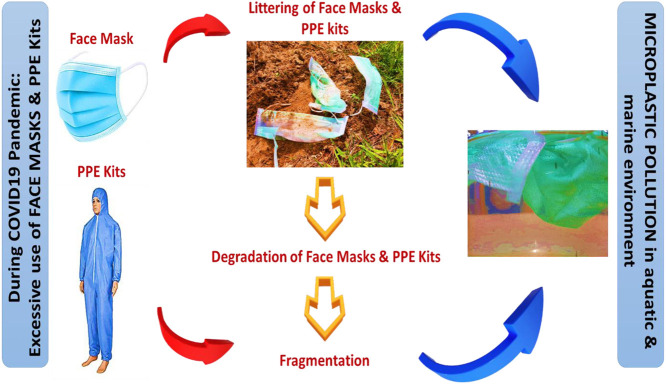- Record: found
- Abstract: found
- Article: not found
Microplastics waste in environment: A perspective on recycling issues from PPE kits and face masks during the COVID-19 pandemic

Read this article at
Abstract
During the COVID-19 pandemic, the extensive use of face masks and protective personal equipment (PPE) kits has led to increasing degree of microplastic pollution (MP) because they are typically discarded into the seas, rivers, streets, and other parts of the environment. Currently, microplastic (MP) pollution has a negative impact on the environment because of high-level fragmentation. Typically, MP pollution can be detected by various techniques, such as microscopic analysis, density separation, and Fourier transform infrared spectrometry. However, there are limited studies on disposable face masks and PPE kits. A wide range of marine species ingest MPs in the form of fibers and fragments, which directly affect the environment and human health; thus, more research and development are needed on the effect of MP pollution on human health. This article provides a perspective on the origin and distribution of MP pollution in waterbodies (e.g., rivers, ponds, lakes, and seas) and wastewater treatment plants, and reviews the possible remediation of MP pollution related to the excessive disposal of face masks and PPE kits to aquatic environments.
Graphical abstract
Related collections
Most cited references82
- Record: found
- Abstract: found
- Article: not found
Microplastics in the marine environment.

- Record: found
- Abstract: found
- Article: found
Risk of COVID-19 among front-line health-care workers and the general community: a prospective cohort study

- Record: found
- Abstract: found
- Article: found

